Celtic-Plus project results at Orange’s Salon de la Recherche
The Salon de la Recherche is a major showcase event, where French network operator Orange demonstrates its most interesting R&D results that will shape the future of telecommunications in Europe and beyond. It took place in Issy les Moulineaux near Paris from 1st to 3rd December 2015.
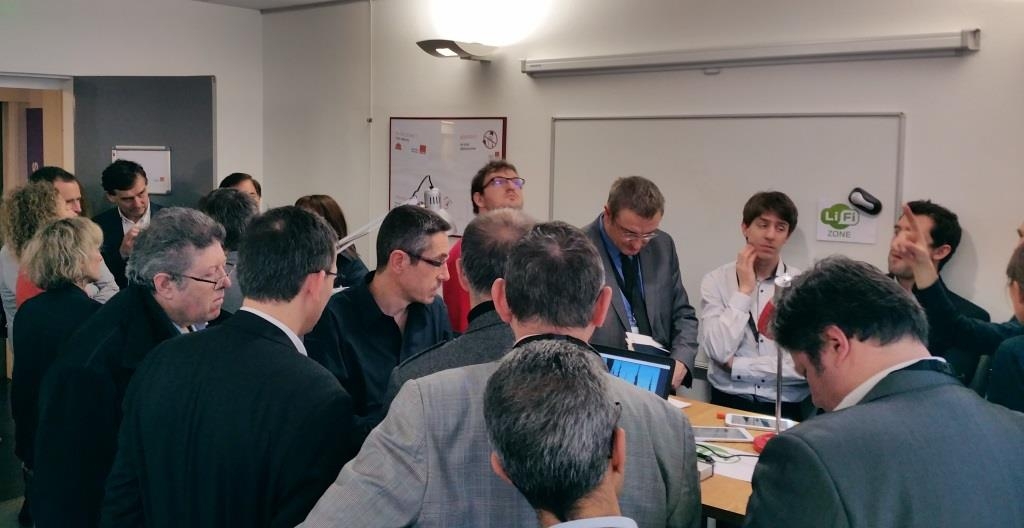
52 booths presented R&D results 5 of them showed the achievements of 3 Celtic-Plus projects:
- Acemind (Advanced Convergent and Easily Manageable Innovative Network Design)
- OperaNet2 (Optimising Power Efficiency in mobile Radio Networks)
- SASER (Safe and Secure European Routing).
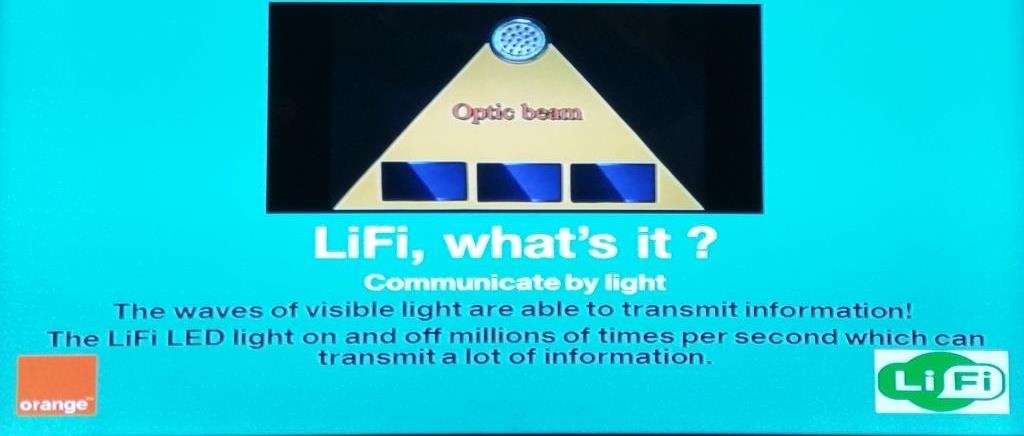
The Celtic-Plus project Acemind has developed services over the LiFi technology that uses the light (switched on and off at MHz frequencies) to connect our smart phones, tablets and computers to the Internet.
The demo shown was using some Oledcomm LED and illustrating 2 services: first, geofencing that enables content (e.g; videos) or actions to be contextualized on a device under the coverage of a given lamp; then the “full duplex service” concept with the goal to provide a bilateral link between a device and a coordinator integrated in the ceiling.
The Celtic-Plus project Opera-Net 2 had two booths showing results in the field of green technologies. The first booth showed the dynamic management of energy consumption in Radio Access Networks where the project has been able to significantly improve the efficiency of the amplification unit of wireless base stations. The second showed a prototype of a water cooled base station from Nokia that could become a commercial product already in 2016
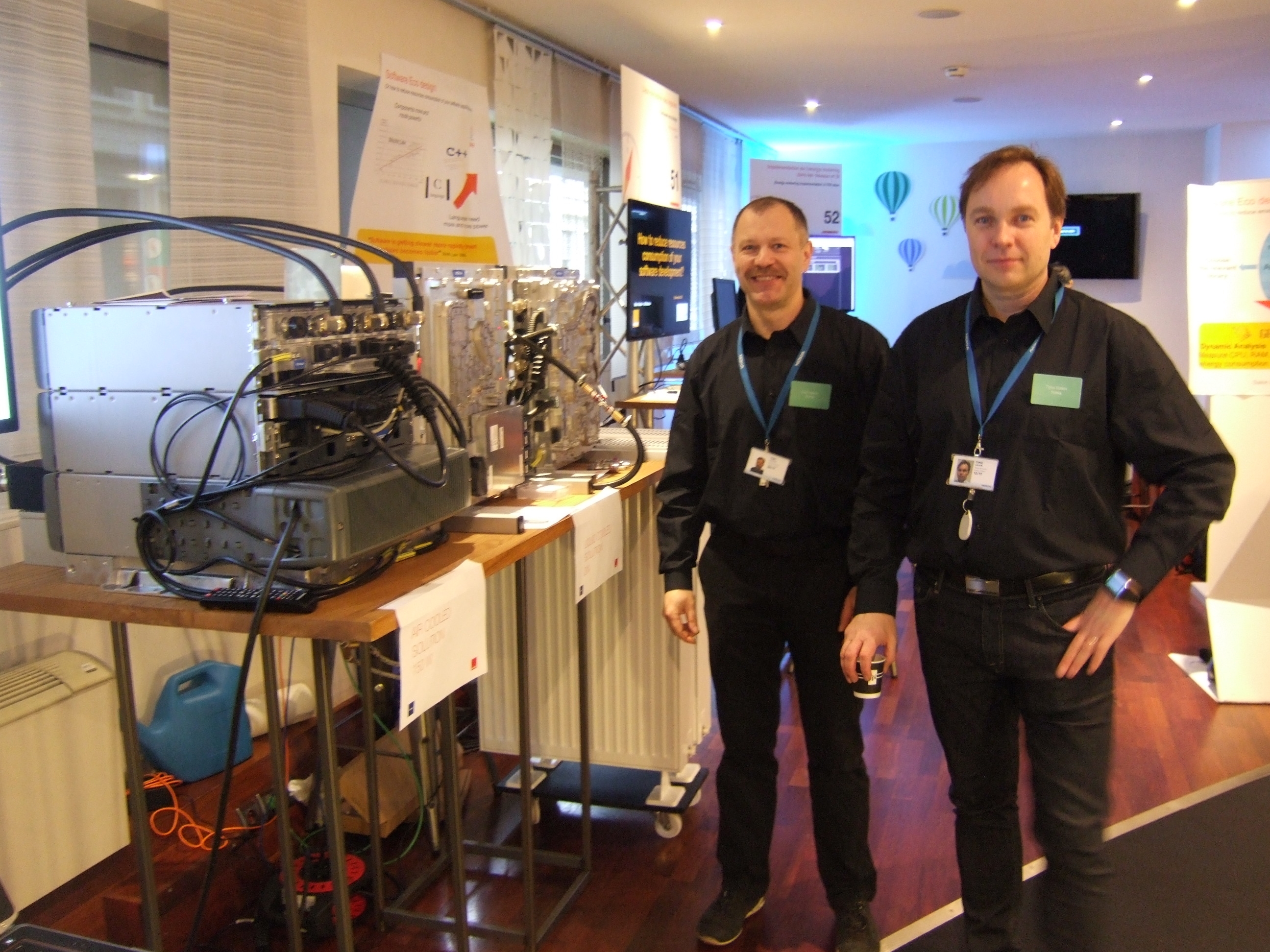
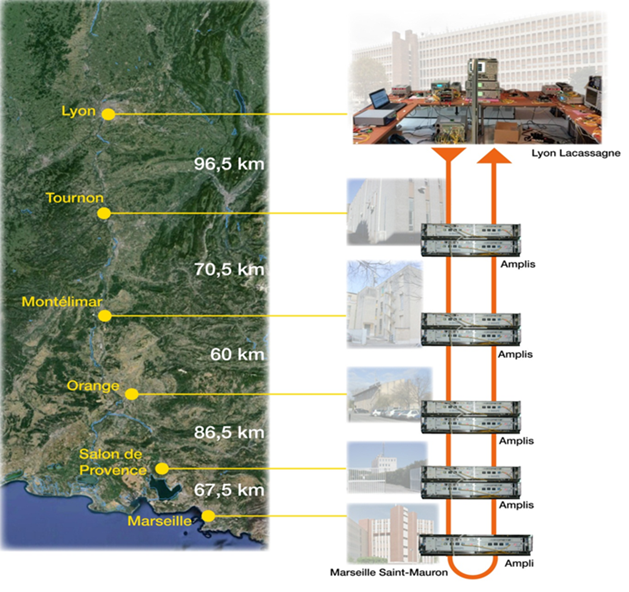
The Celtic-Plus project SASER showed the World Record Transmission Field Trial of 38.4 Tbps that has been achieved during last summer on the network of Orange between Lyon and Marseille. This record was reached using a new transponder technology together with optical amplification combining Erbium-doped fiber and Raman amplification technologies. This technology had already been used in costly submarine cables but became also possible now for conventional terrestrial networks due to the low cost technology developed in the SASER project.
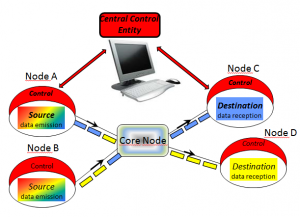
Optical switching with real time control plane:
The principle of this Network concept: This realisation is a transparent network without electronics in the core where the routing decisions are taken, by choosing a wavelength at the sending nodes. The data stream will find its path through the Network without fast optical switches. All data streams of a given wavelength will be directed to the same receiver node.
A proof of concept: The wavelengths of the emitted signals are allocated by the central control entity and these allocations can be changed in time. This allows collision-free operation in the network and a dynamic on-demand resource allocation capability.
Benefits: This break-through concept allows optical data aggregation and allows a better usage of the network capacity. It is scalable to a large number of source and core nodes in the network. The need for buffering and processing power is completely eliminated from the core nodes and is limited to edge nodes and the central control entity. With the sharing of interfaces and the passive core nodes we fulfil the energy saving requirements in the network.




